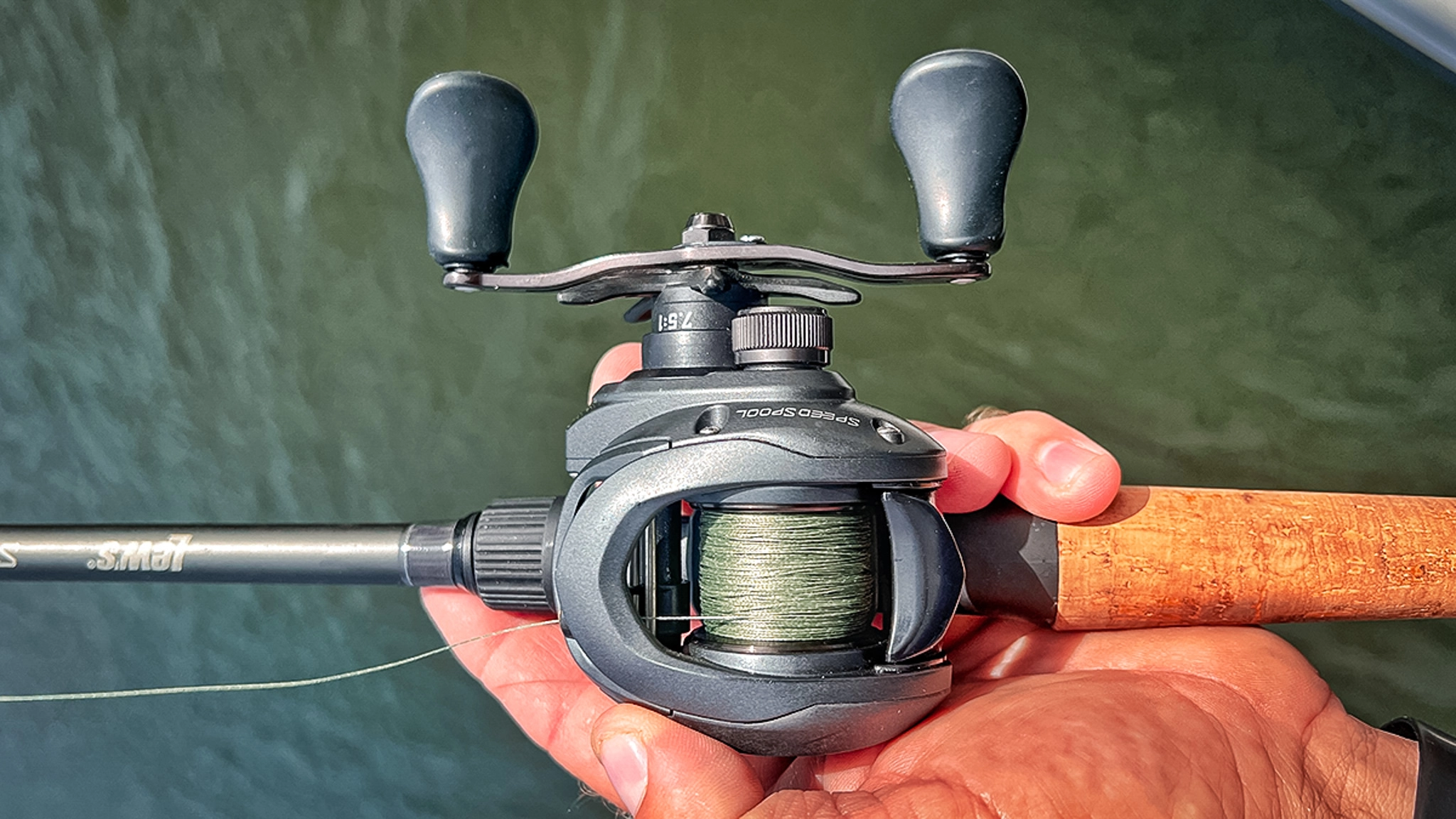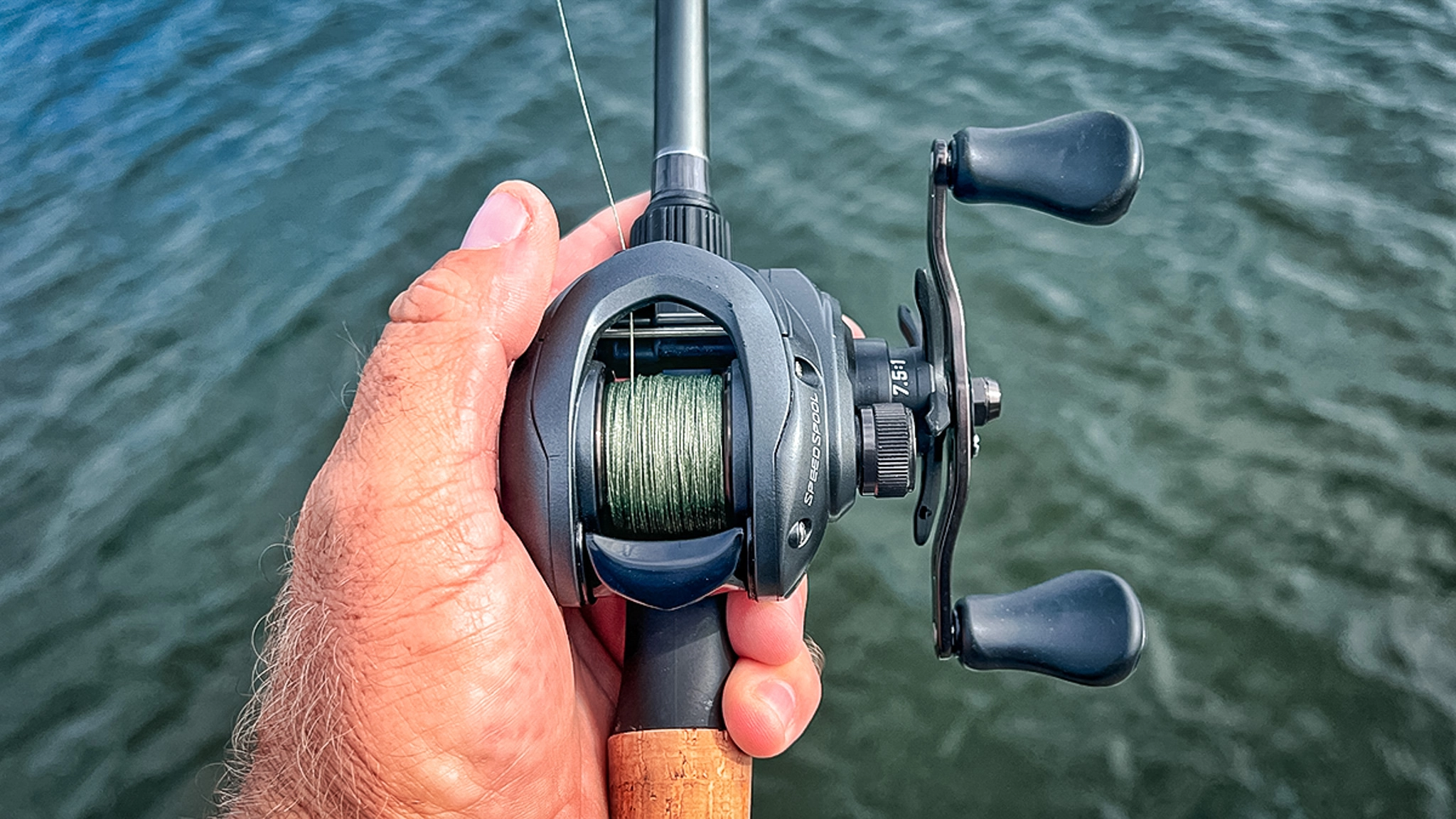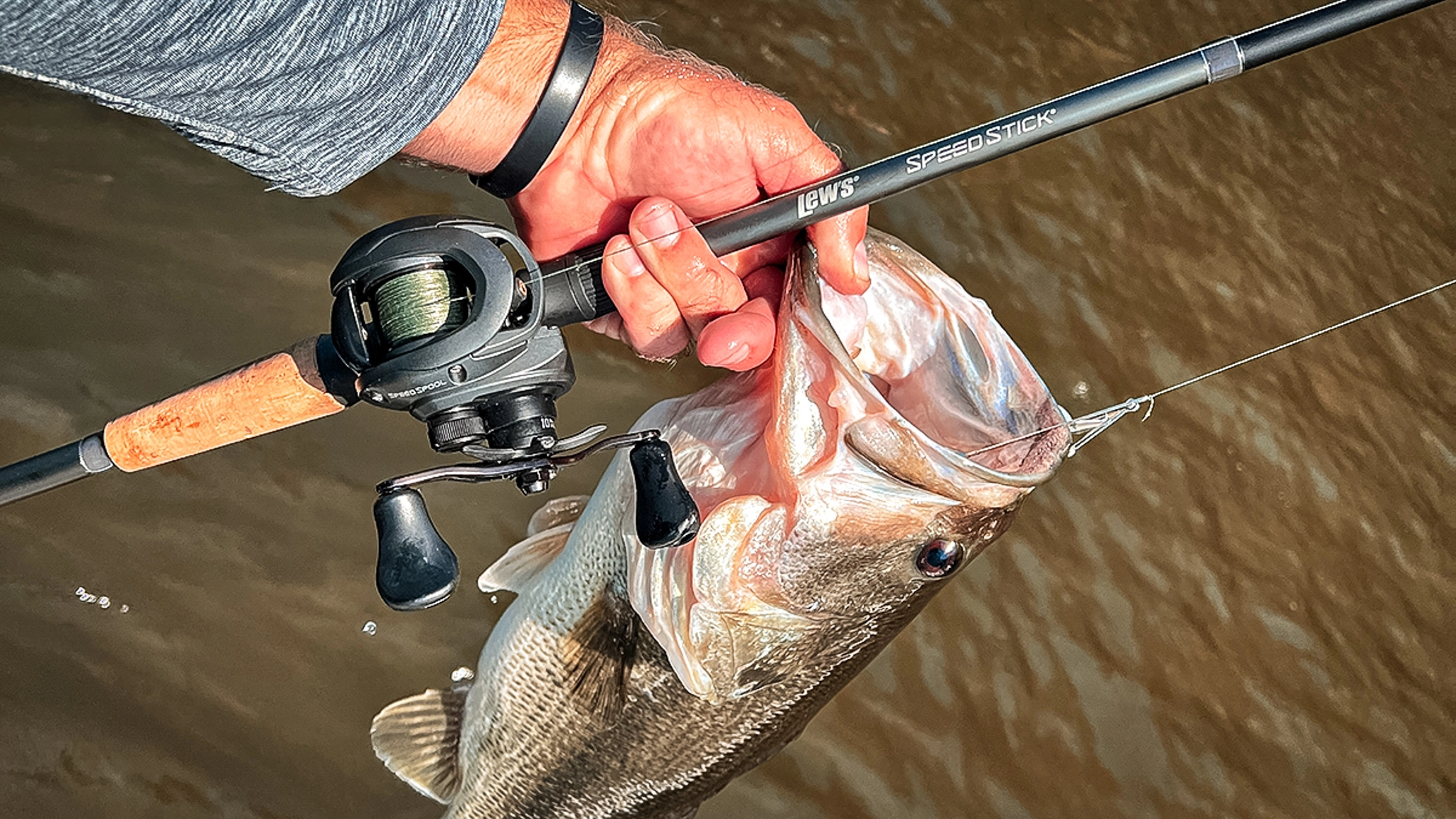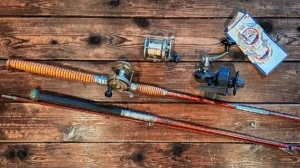Of the several dozen reels I’ve fished with over the past decade, one lineup has gotten more playing time than any other: the Lew’s LFS Speed Spool. I stumbled onto the first generation of this $100 casting reel more than 12 years ago. In that time, I’d wager I’ve owned at least 20 of these reels, all first- and second-generation models.
These reels have proven to be the most effective, efficient, and longest-lasting casting reels for the money that I’ve ever found. With such a rich legacy, I was excited to hear Lew’s released the Gen 3 version of the Speed Spool at ICAST 2024. I’ve been fishing with a couple of these new reels for about three months now, and they’re even better than ever in many ways — and they’re still priced at just $100.
Lew’s Speed Spool LFS Specs and Features
- Recessed external Magnetic Control System (MCS) for brake
- 95mm aluminum handle with Pro Power Knobs
- Solid brass Speed Gears
- 10 bearings
- P2 Super Pinion gear
- Audible click drag
Retrieve: Right and left
Gear Ratio: 5.6:1, 6.8:1, 7.5:1 and 8.3:1
Weight: 7.0 ounces
Bearings: 9+1
Line Capacity: 12/120 (pound test in mono/yards)

Out of the Box
When I first pulled the new Speed Spool from its box, I noticed that this was a beefier reel than its predecessors, which piqued my interest right away. My one complaint about the Gen 1 and Gen 2 models is that they didn’t really handle power fishing techniques all that well.
They were fantastic with lighter baits, up to about 1/2 ounce, but when it came to flipping, frogging, Whopper Ploppers, fishing spinnerbaits, swim jigs, and buzzbaits on heavier braid around thick cover, I would put the old Speed Spools down and switch to either the Lew’s SuperDuty or something like the Shimano Curado the bear the load.
This new Speed Spool though reminded me more in some ways of those two power fishing reels than it did the previous two generations of this reel. As a power fishing fanatic, this definitely excited me. But, it did also raise some concerns as to whether or not this reel would be as good with lighter baits as the Gen 1 and Gen 2.

Something to note that you may notice in the photos: The reel I tested was damaged during shipping and one of the pegs on the drag star was broken off. With only a handful of these reels in the U.S. at the time, I chose to go ahead and test it anyway.
On the Water
I’ve thrown a popper, twitch bait, crankbait, light jig, buzzbait, and various other lures on this reel. It’s proven to be easy to use, great at casting, and strong. I will say that my original two assumptions proved true on the water: this is a better power fishing reel than its predecessor, but the Gen 2 version of this reel was and is better with lighter baits.
There are still some of the previous versions of this reel available and on sale. I’d strongly recommend considering buying one or more them if you’re looking for a good all-around casting reel — one that handles baits on the lighter side really well, too. My assumption is that this older reel is being phased out now and will no longer be available once the current stock is depleted. On account of what I do for a living, companies send me reels to test for free or at a steep discount. If that were not the case, I would personally jump on some of the Gen 2 Speed Spools at $89.97.
A Good Fight With the Speed Spool

My favorite memory with this new version of the reel came with throwing a buzzbait a few weeks ago. I was out on a local lake testing gear and had already caught a few fish on that bait. The Speed Spool had been handling the technique well; I was able to make precise casts with the reel around and under cover and the fish I’d caught with it up to that point were brought to the boat with little to no fuss. Then, the real reel test came.
I slung my buzzbait up near a grass patch in the shade in about a foot of water. I had reeled the bait out of the shade and the cover and was just about to give up on the cast, when a giant overtook it. It was one of the most ferocious strikes I’ve had in quite a while. The bass doubled over my 7-foot medium heavy Lew’s Speed Stick as it dragged my line to the back of the boat.
I could tell the fish had the bait good as it neared the boat, and I could feel my heart pounding as I tried to bring the fish aboard. When I finally got my hands on the 5-pound-plus fish and hoisted it aboard, it hit me — this is a heckuva power fishing reel.
I got a few quick pics with the bass and released it, and then put that reel down for the day. The Lew’s LFS Gen 3 Speed Spool had passed the test with flying colors.

Top Features
Though there are some differences between the Gen 3 Speed Spool and its parent and grandparent, I like that Lew’s kept one key component the same: the external brake control.
An easy to use, simple external brake control is imperative on an entry-level reel like this. Internal brake controls that are only accessible by removing the side plates are just too complicated in my opinion for most anglers who are making that early transition to a baitcaster.
Even after fishing with a baitcaster for more than three decades myself, I still prefer to use reels with an external brake control, because they’re just so much easier to adjust on the fly.

The new Speed Spool also has a beefed up handle, which I like a lot. Again, this 95 mm aluminum handle with its Pro Power Knobs is more reminiscent of the handle on the Shimano Curado than the handles on the old Speed Spools — an appreciated upgrade.
It provides a firmer grip and gives the angler the ability to winch bigger baits and bigger bass with ease, even in dense cover.
The profile of the reel is a little bigger, too, even though it’s actually a touch lighter than the Gen 2 (7.1 ounces compared to 7 ounces even) thanks to its one-piece aluminum frame.
The Final Verdict

The Lew’s Speed Spool Gen 3 is an instant classic. Even though this reel isn’t as capable with the really light stuff, it’s a better power-fishing reel, and because of that, the new Speed Spool is a more well-rounded reel overall.
If you’re looking for an affordable reel that can fish anything from a shaky head to a flipping jig, you’d be hard pressed to find something better at the $100 mark.












